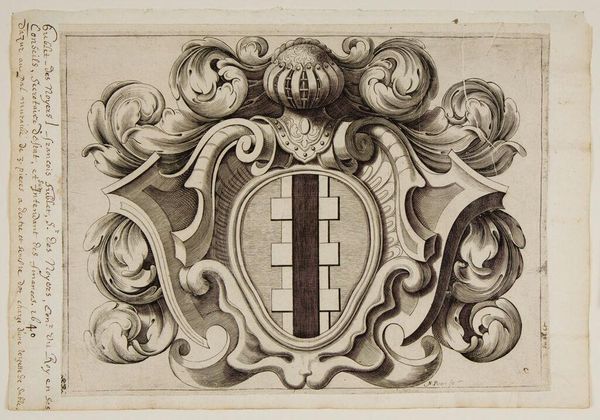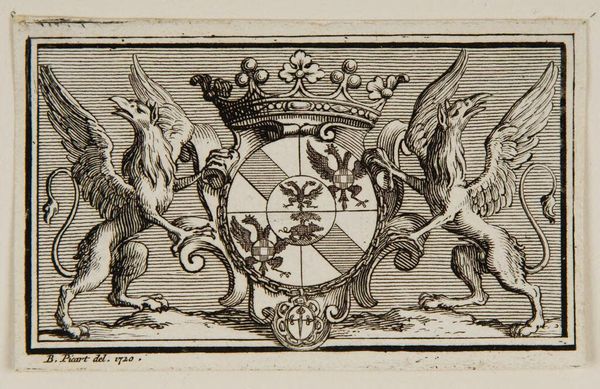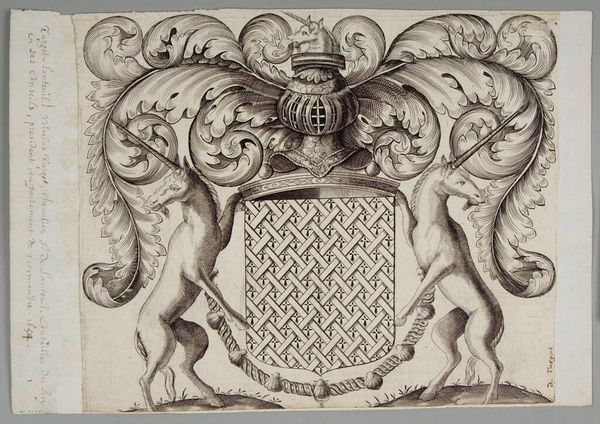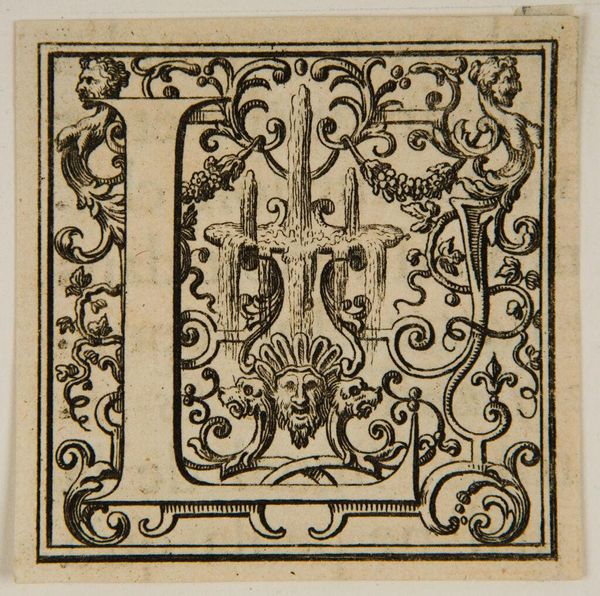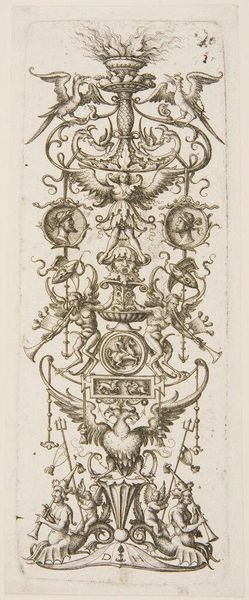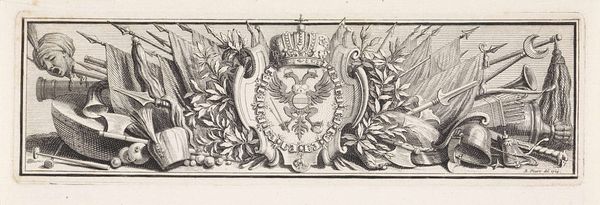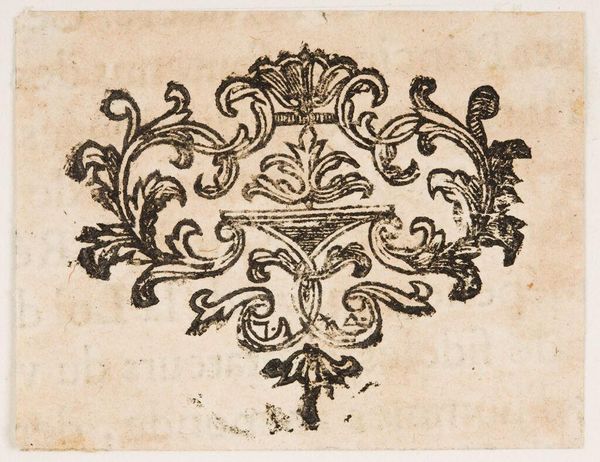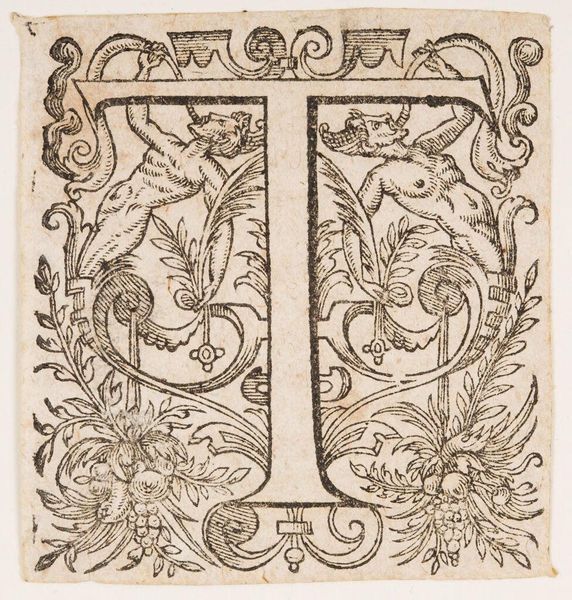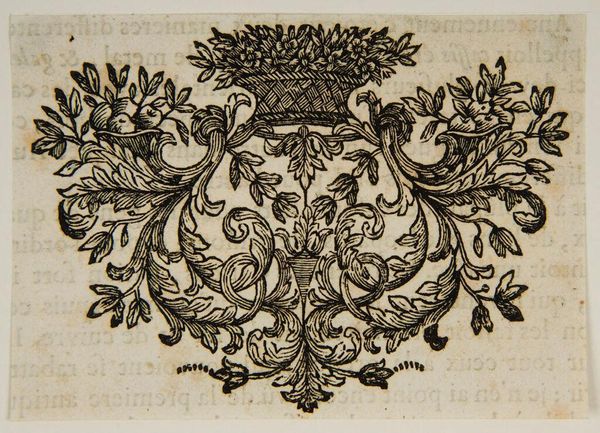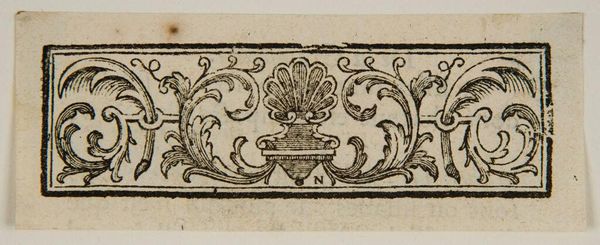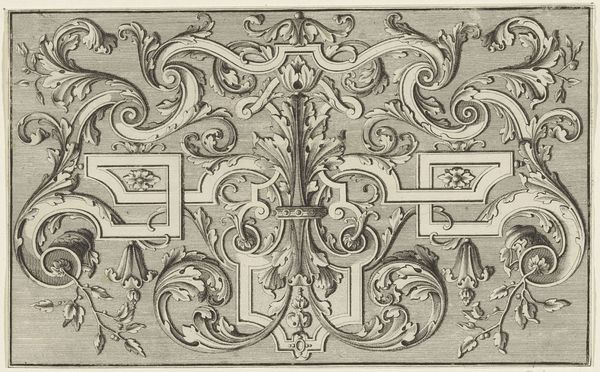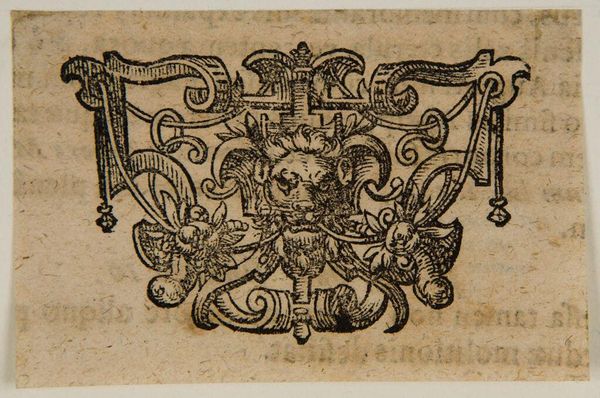
Copyright: CC0 1.0
Editor: Here we have an anonymous engraving titled "Coat-of-Arms." It's quite elaborate, with lots of swirling details around a central shield. It feels very formal and hierarchical. What do you see in this piece, especially considering its historical context? Curator: This coat-of-arms speaks volumes about power and identity in 17th-century society. It's not just decoration; it's a visual assertion of status. The symbols chosen, the architectural details – they all construct a narrative about the family or institution it represents. Who was being excluded as these identities were asserted? Editor: So, you’re saying it's as much about who is *not* represented as who *is*? Curator: Precisely. Coats-of-arms served to legitimize certain lineages while solidifying social hierarchies. By examining these symbols, we can decode the power dynamics at play and question whose stories are being prioritized. Editor: That's a powerful way to look at it. I hadn't considered the exclusionary aspect so explicitly. Curator: Art can be a tool for both inclusion and exclusion. Analyzing these historical markers allows us to better understand and challenge contemporary structures of power.
Comments
No comments
Be the first to comment and join the conversation on the ultimate creative platform.
